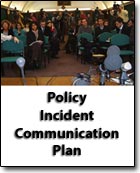Top 10 Press Release Best Practices
Whenever enterprises are impacted by negative (cyberattacks) or positive events communication with the media is critical - Press Releases should be the first source for factual and informational communication with the media
Top 10 press release best practices that authors should follow

- Perform extensive research. Spend the time to read and subscribe to press releases not only in the niche you work within but from some of the larger and more successful companies in the world. Look to see how they are laid out, worded and put together and pick the best parts from each to incorporate into your own releases.
- Don't assume anything. Your reader may not know what it is they are getting, and since your goal is to have your reader generate buzz to their readers or media outlet, lay out the specifics for them.
- Don't belittle or talk down to anyone. While number 2 says to be specific about what you are writing, don't write in a condescending manner, which almost always ends in a delete from the reader. Assume they are intelligent.
- Don't oversell your product or service. The purpose of a press release is to put it into the hands of those who have influence and a crowd to share it with. They are not the ones who will be buying or using whatever is in the contents of your press release. Don't try to make them the buyer, rather look at them as your reseller and present the information in the same way you would teach a sales associate how to sell to a customer in a store.
- Don't over-write or bloat the release. A press release is not an article, it's meant to be informative and easily digestible; keep the fluff to a minimum and focus on the details that pertain to the service or product
- Create a clever subject line. Log into your email and check the messages you have deleted but never opened. Chances are the subject line didn't entice you to open it. Be creative and to the point with the subject line, the difference here can be a success or total failure and most new press release writers skip the importance to this small but invaluable part of content delivery.
- Don't jump the gun with sending your release. Wait until you have all the facts, specifics and proper information for the contents within, then send it. Don't send the release announcing a forthcoming release, which will break the trust and relationship with the readers you have. You're better off sitting on a release for a few days rather then sending it out missing crucial information.
- Optimize the Press Release for Internet Search Engines. Once your release is issued it will be published on the Internet by a number of the media that receive it. For this reason the author should communicate with internal Internet specialists.
- Maintain an internal list of reporters and editors. Over time authors will contact or be contacted by various members of the media. On-going relationships should be fostered with these contacts. When event occurs they are the reporters who will be most likely pass on your message.
- Be available and responsive right after a press release is issued. Questions will be asked by interested media contacts. They have deadlines typically need to have their questions answered quickly.
Read On Order Incident Communication Policy Download Sample
